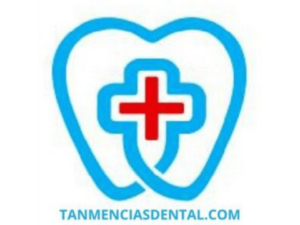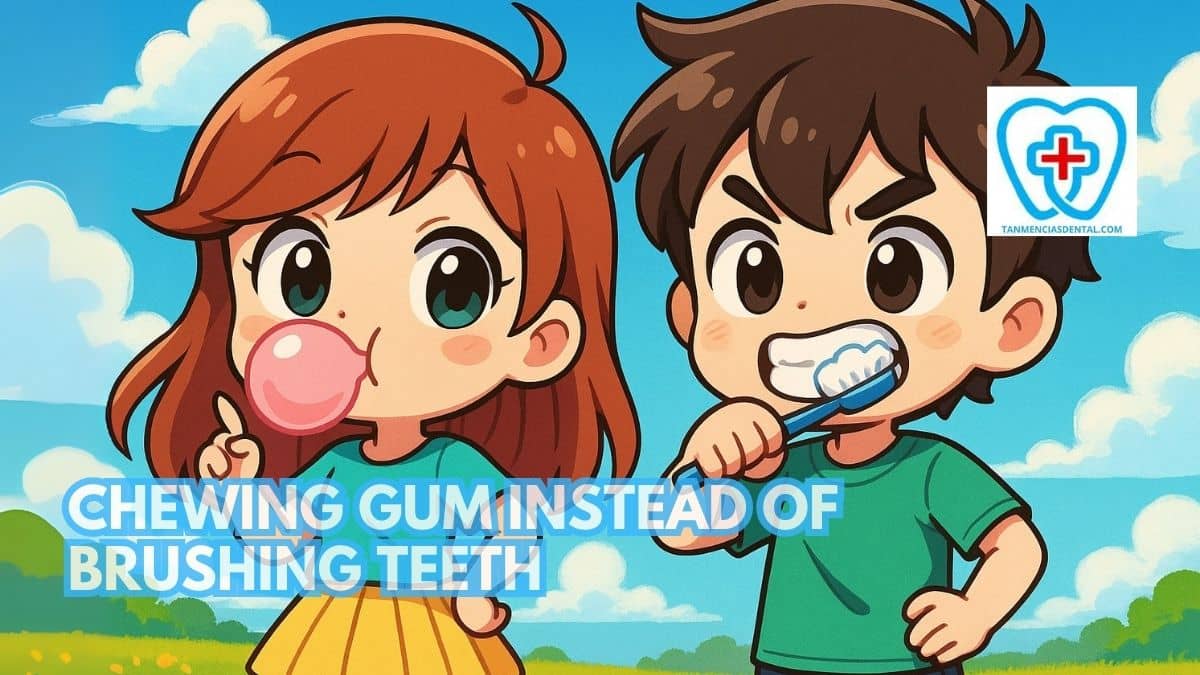Chewing gum instead of brushing teeth is an idea that attracts attention because of its convenience.
Some people see gum as a quick way to keep their mouths clean, especially when a toothbrush is not available.
Chewing gum can indeed bring certain benefits, like more saliva and fresher breath, but it cannot remove plaque or replace the deep cleaning that brushing provides.
To understand its real value, it is important to look at both the strengths and the limits of chewing gum for oral health.
Let’s explore how gum compares with brushing and flossing, and explain the best ways to keep a healthy smile.
1. Brushing: The Unsung Hero of Your Smile
Brushing your teeth removes plaque, a sticky film of bacteria that forms on your teeth.
This process is essential for preventing cavities and gum disease.
A toothbrush can reach the surfaces of your teeth and gums, providing a thorough clean that chewing gum cannot achieve.
Regular brushing also helps to remove food particles that can cause bad breath.
Skipping brushing can lead to serious dental problems over time.
🦷 Brushing Up on Prevention: Can Tooth Decay Be Reversed or Only Prevented?
2. Gum’s Saliva Boost: A Wash for Freshness
Chewing gum increases saliva production, which helps to wash away food particles and neutralize acids.
This natural cleaning mechanism can temporarily freshen your breath.
However, while increased saliva flow can reduce bacteria, it does not remove plaque from the teeth.
Chewing gum can be a helpful tool for maintaining oral freshness between meals.
Nonetheless, it should not be relied upon as a primary method of cleaning your teeth.
🦷 Why Brushing Your Teeth At Night Is More Important Than You Think
3. Gum Can’t Reach Everywhere: Brushing and Flossing Fill the Gaps
Chewing gum can only clean the surfaces of your teeth, leaving the spaces between teeth and along the gumline untouched.
These areas are prone to plaque buildup, which can lead to cavities and gum disease.
Brushing and flossing are necessary to clean these hard-to-reach places.
Without these practices, plaque and food particles can accumulate, causing dental issues.
Chewing gum can be a useful supplement, but it cannot replace the effectiveness of brushing and flossing.
🦷 How Long Does It Take To Treat Gingivitis?
4. Sugar-Free Sweetness with Xylitol: A Double Whammy for Oral Health
Sugar-free gum often contains xylitol, a natural sweetener that can help fight tooth decay.
Xylitol reduces the amount of harmful bacteria in the mouth, which lowers the risk of cavities.
Chewing sugar-free gum with xylitol after meals can be beneficial for maintaining oral health.
However, while xylitol gum can help reduce bacteria, it cannot physically remove plaque or food particles like brushing and flossing can.
It is best used as an additional measure rather than a replacement for traditional oral hygiene practices.
🦷 Can You Recycle Electric Toothbrushes?

5. Why Sugary Gum Can Harm Your Teeth
Chewing gum that contains sugar feeds the bacteria in your mouth.
These bacteria produce acids that attack tooth enamel, increasing the likelihood of cavities.
Unlike sugar-free gum, sugary gum does not support saliva in protecting teeth but instead adds more risk.
Over time, chewing sugary gum can lead to more plaque buildup and tooth decay.
For better oral health, always choose sugar-free gum instead of gum that contains sugar.
🦷 How to Choose the Best Antibacterial Toothpaste for Gingivitis That Really Works
6. Fresh Breath Fix, Not a Cure: Chewing Gum is Temporary
Chewing gum can provide a quick fix for bad breath by masking odors with its minty flavor.
The increased saliva production while chewing also helps to wash away food particles and bacteria temporarily.
However, this effect is short-lived and does not address the underlying causes of bad breath, such as plaque buildup or gum disease.
For long-lasting fresh breath, brushing and flossing are necessary to remove these root causes.
Relying solely on chewing gum can lead to persistent oral health issues.
🦷 Why Dentistry Is Important: How It Saves Lives Beyond Just Smiles
7. Chewing Gum to Replace Brushing? Never an Option!
While chewing gum offers some oral health benefits, it should never be seen as a replacement for brushing.
The mechanical action of brushing with a toothbrush is essential for removing plaque and food particles effectively.
Chewing gum cannot provide the same level of cleanliness and can leave harmful bacteria and plaque behind.
Incorporating gum into your routine can be beneficial, but it must complement regular brushing and flossing.
Neglecting proper brushing can lead to significant dental problems.
🦷 Is It OK To Eat After Brushing Your Teeth?
8. Emergency Only: Chewing Gum as a Brushing Buddy
In situations where brushing isn’t possible, such as after a meal on the go, chewing sugar-free gum can serve as a temporary solution.
The gum helps stimulate saliva production, which can neutralize acids and wash away some food particles.
However, this should only be an emergency measure and not a regular habit.
Regular brushing and flossing remain critical for maintaining oral health.
Chewing gum should be viewed as a supplementary tool rather than a primary method of cleaning your teeth.
🦷 Can Pediatric Orthodontists Prevent Complex Dental Problems? Early Interventions Explained
9. Regular Checkups Remain Key: Maintaining a Healthy Smile
Regular dental checkups are essential for maintaining a healthy smile.
During these visits, dentists can identify and treat any issues early, preventing more serious problems.
Professional cleanings remove plaque and tartar buildup that cannot be eliminated by brushing and flossing alone.
Regular checkups also provide an opportunity for dentists to give personalized advice on oral hygiene practices.
Chewing gum, no matter how beneficial, cannot replace the expertise and care provided by dental professionals.
🦷 Why are My Gums Peeling After Brushing My Teeth?
10. Beyond the Gum Pack: Healthy Habits for a Healthy Smile
Maintaining a healthy smile requires more than just chewing gum.
Good nutrition plays a crucial role in oral health, as a balanced diet provides essential nutrients for strong teeth and gums.
Avoiding sugary snacks and drinks can prevent tooth decay.
Regular brushing and flossing are necessary to remove plaque and food particles.
Incorporating these healthy habits into your daily routine ensures a comprehensive approach to dental care.
🦷 Basic Dental Needs in Marikina
11. Partners in Smile Care: Chewing Gum with Brushing and Flossing
Chewing gum can be a useful partner in your dental care routine when used correctly.
Combining it with regular brushing and flossing offers a comprehensive approach to oral hygiene.
Chewing gum helps stimulate saliva production and reduce bacteria, while brushing and flossing remove plaque and food particles.
Together, these practices can help maintain a healthy and clean mouth.
However, it’s essential to remember that gum should complement, not replace, traditional oral care methods.
🦷 Marikina-Based Dental Specialists
👨⚕️ Conclusion
Chewing gum can offer benefits such as increased saliva production and temporary fresh breath.
However, it cannot replace the thorough cleaning provided by brushing and flossing.
For optimal oral health, a combination of good oral hygiene practices, regular dental checkups, and healthy habits is essential.
Chewing gum should be viewed as a supplementary tool to enhance, not substitute, traditional dental care.
A balanced approach ensures a healthy, bright smile.
😊 Self-Promotion
Welcome to Tan-Mencias Dental Clinic, your friendly neighborhood dental care provider in Parang, Marikina City.
We’re dedicated to giving you a healthy and beautiful smile with our top-notch dental services.
For any questions or to book an appointment, feel free to call us at 9171451074, send a message through our Facebook page, or use our website’s contact form.
Our team is here to help you with all your dental needs, ensuring you receive the best care possible.
We look forward to seeing you soon!
❔ FAQs
1. Does chewing gum whiten teeth?
No, chewing gum does not effectively whiten teeth.
While some gums may help remove minor surface stains by increasing saliva production, they cannot change the natural shade of your teeth or remove deep stains like professional whitening treatments or whitening toothpaste can.
2. How long should I chew gum for it to be effective?
For the most effective results, it is recommended to chew sugar-free gum for about 20 minutes after eating.
This amount of time is sufficient for the gum to stimulate saliva production, which helps to neutralize acids and wash away food particles.
3. Are there any side effects to chewing too much gum?
Yes, excessive gum chewing can lead to several side effects.
It can cause jaw fatigue or even temporomandibular joint (TMJ) issues.
It may also lead to digestive discomfort, such as bloating and gas, due to swallowing air while chewing.
4. What if I can’t brush my teeth for a whole day?
What’s the best thing to do?
In an emergency situation where you cannot brush, chewing sugar-free gum with xylitol after meals is a good temporary measure.
Additionally, drinking plenty of water can help rinse away food debris.
However, this should not become a regular habit.
Always be sure to brush and floss as soon as you can to properly clean your teeth.
5. Should I chew gum with or without xylitol?
You should always choose sugar-free gum, and gum with xylitol is the best option for oral health.
Xylitol is a natural sweetener that actively helps reduce the amount of harmful bacteria in your mouth, lowering your risk of cavities.
Gum that contains sugar, on the other hand, feeds the bacteria that cause tooth decay.

